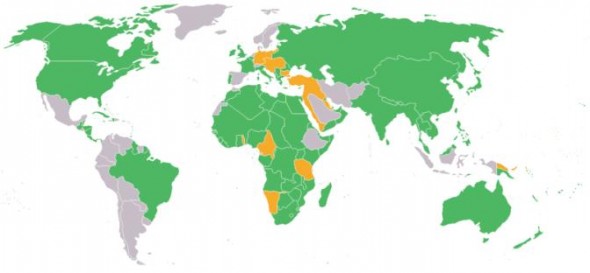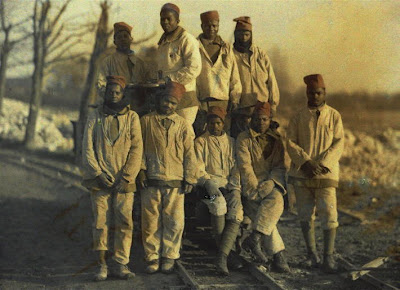People
By definition World War 1 was the first, modern, global war. Like all wars, it was a battle of strategies, generals, bureaucrats, soldiers and civilians. But unlike all previous wars, it crossed national, religious and ethnic boundaries, militarizing civilian populations and resources worldwide in a way and scale never before seen on this planet.

Map of Nations Actively Involved in WW1 – 1914
The Great War was about, by and for all people.
Who were the people? They were more than Europe’s soldiers and civilians; they were citizens of most countries from professional soldiers, officers, volunteers/conscripts to non-uniformed military support personnel, politicians, refugees, medical workers and many men, women and children caught in various fronts across nations.
Here are some of the larger national and multi-national peoples and how they endured the war:
The Europeans of WW1
Apart from republican France, royal families ruled the major powers of Europe in 1914.
Some of the main players who proved pivotal in the decisions and actions during the war were as follows:
- George V, King of Britain
- Wilhelm II, Kaiser of Germany
- Raymond Poincare, President of France
- Franz Joseph, Emperor of Austria and King of Hungary
- Albert I, King of Belgium
- Nicholas II, Tsar of Russia.
During the course of the war the European people were moved, displaced, injured and died in unprecedented numbers. Their countries boundaries were ignored, fought over and even abolished. The Russians fought to defend their own vast territory, that housed an enormous population, had extensive natural resources and spanned Europe and Asia (Ural Mountain divide).
Some people regained their nationality. For example, France regained the controversial Alsace and Lorraine regions. And the Latvians became Latvian again.
The Asians of WWI
Indian people were sent to Europe and the Middle East to fight against the Ottoman empires. Little is known of the motivation of Indian soldiers considering the majority of the forces where volunteer and not conscripted. The Japanese skirmishes with the Chinese and the German Pacific Territories were quashed by Allied ANZAC forces from Australasia.
The Australasians of WW1
Australians and New Zealanders were sending their military personnel to the battle zones as members of the British Empire became automatically involved following Britain’s declaration of war on Germany on 4th August 1914. The first campaign (and certainly not their last!) that Australians fought in was in German New Guinea after the Australian Naval and Military Expeditionary Force was dispatched, from Australia, to seize German possessions in the Pacific in September 1914.
WWI North & South America
Canadians as members of the British Empire augmented the Allied forces in Europe initially. Throughout the course of the war, and certainly at its conclusion Canada was widely regarded on equal footing as most other independent Allied countries.
.
The peoples of the United States entered the war in 1917 and provided the pivotal support in manpower and supplies that ensured the outcome of WW1 and Germany’s eventual surrender.
The peoples of the Caribbean and South American countries did not escape the war effort. Empire countries fought – even the Falkland Islanders experienced their battles. It was the blockading of the Chilean ports by the Allied navies that was responsible for Germany running short of explosives; guano (from Peru and Chile) being the source of the N in TNT.
The Panamanian people were instructed; “to cooperate with all the energies and resources they can command for the protection of the canal and to safeguard national territory”.
The Africans in WW1
 Africa’s main contribution to the First World War was as an arena of battle – in fact, some say, the first and last shots of the war were fired in Africa. German South West Africa was brought under allied control in the first few months. Cameroon took longer to capture. The East Africa campaign took even longer. And in the north of Africa the Egyptians were fully involved. African soldiers also fought on the front lines in Europe.
Africa’s main contribution to the First World War was as an arena of battle – in fact, some say, the first and last shots of the war were fired in Africa. German South West Africa was brought under allied control in the first few months. Cameroon took longer to capture. The East Africa campaign took even longer. And in the north of Africa the Egyptians were fully involved. African soldiers also fought on the front lines in Europe.
Millions of people were involved in the The Great War. Pictures really do say more than the written word. What better way to document, comment, record and identify people than to “take a picture”? The Kings, Kaisers, Tsars, Presidents, Leaders, fighting men, working women, civilians, elderly, young and the dying, all were portrayed. They were pictured whilst posing, working, living, eating, sleeping and dying.
One tenth of the world’s people died in this war and they were the people, of all nations, of all continents, of Planet Earth.